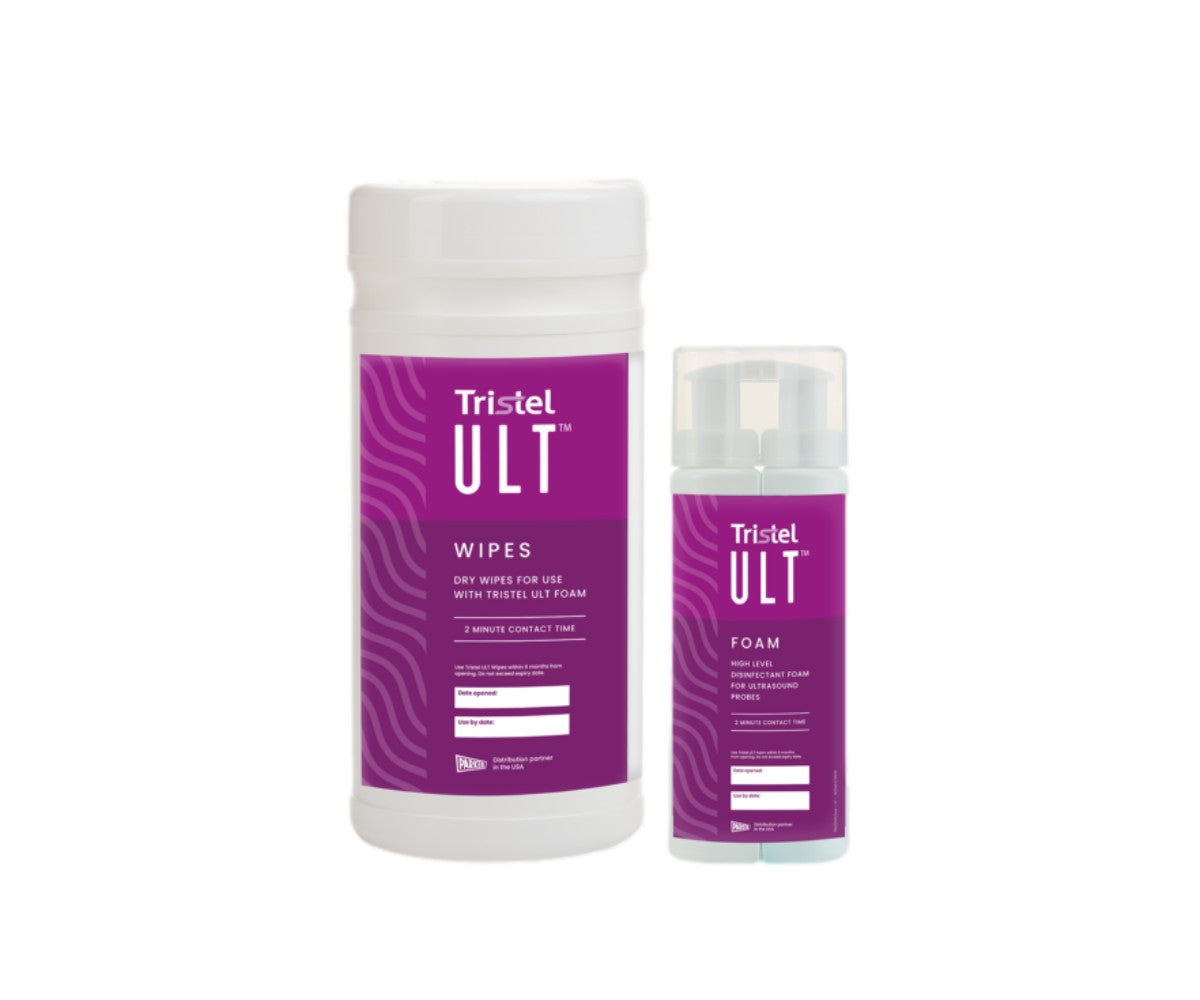When performing endocavity invasive procedures (prostate biopsies and ovarian biopsies to name a few), medical professionals generally rely on a device called needle guide to help them. While they are not required by law, biopsy guides are physicians' best friends when it comes to navigating their needle in tissues and placing it in the right spot.
There are two kinds of endocavity needle guides: the disposable guides (also referred to as single-use) and the reusable guides. But before getting to the details, let's ask the question of why using a guide.
The use of a biopsy guide will allow clinicians to keep their needle straight, in the plane of the ultrasound beam, during the procedure. The needle is sure to follow the pathway displayed on the ultrasound screen.
A single-use needle guide is a medical-grade plastic device that snaps onto the ultrasound transducer. Only the needle channel is made of stainless steel. The disposable guide is sterile (sterilization using ethylene oxide) and comes individually wrapped. As the name suggests, this type of guide must be disposed of after each use.
On the other hand, the reusable needle guide is entirely made of stainless steel. It gives the device the resistance and durability it needs to go through hundreds of disinfection cycles. This reprocessable instrument can either be re-sterilized or high-level disinfected.
They both accept needle of 16 to 18 gauge. Some reusable needle guides are compatible with 14Ga needles though. Also, they can both be used for TRUS (transrectal ultrasound) or TVUS (transvaginal ultrasound)
We are now going to compare the two types of guides over five criteria:
- Ease of use
- Cost
- Time efficiency & workflow
- Safety & hygiene
- Patient comfort
Let's jump right into it.
As mentioned above, the disposable guide simply snaps onto the transducer when the reusable one generally has to be secured with a system of latch and screw. So most of the time, the single-use is easier to install than the metal one.
Also, the disposable needle guide is made of one single piece of plastic. The reusable has multiple moving parts that can be tricky to handle in a sterile environment, or might be lost if mishandled (metal screws)
Last but not least, the metal needle guide must be appropriately stored in order to avoid recontamination. But we'll get to that later when talking about hygiene and workflow.
For the rest, they both guide the needle the same way and provide the caregiver with the same level of quality and confidence.
The winner here is the disposable needle guide, which is simple to put on and also very stable on the transducer.
It might be easy to say that reusable needle guides are the true budget-friendly solution on the long run. While it is true that metal guides can save a lot of money, it is not always the case. It depends on many different criteria including the number and type of procedures performed each day, the disinfection protocol already in place, manpower & equipment available, and more.
First, let us mention something important: It is admitted that reusable needle guides must be renewed every two years (it slightly varies depending on the level of utilization). In fact, after such a period of time, the moving parts (screws, latches...) start to get loose and the needle channel gets worn by repeated biopsies. Overall, the guidance becomes less accurate and the benefits of the guide fade out. In addition, hundreds of disinfection and cleaning cycles also have an impact on the condition of the device. For those reasons, we recommend changing for a new guide every two years.
The cost of a single-use guide alone (i.e. not bundled with gel and probe cover) is around $13. On the other hand, a reusable needle guide is about $1000 (depending on the gauge size and the transducer model). As a result, one must perform more than 75-80 biopsies in two years to see an interest in the reusable guide. From that perspective, it is very obvious that metal guides win the price battle.
But not so fast. We haven't taken into account all the associated expenses: the cost of the disinfectants, the cleaning brushes, and the personnel that will clean the device. Even if they account for a tiny amount (or even are impossible to account for), these extra expenses add up in the long run.
Also, you could save money if you order your disposable needle guide bundled with an ultrasound cover and a sterile gel packet.
For a smaller facility where not so many endocavity biopsies are performed, the disposable guide is definitely a good solution. For places where more than 40 biopsies are carried out each year, the reusable alternative might be an option but still has to be considered with the other criteria in mind.
Time is certainly the most precious resource of any medical facility, regardless of the size. As mentioned earlier, reusable needle guides might be budget-friendly, but they will eat more of your time. They need to be thoroughly cleaned, and then high-level disinfected or sterilized.
The cleaning process itself takes about 5 minutes. After disassembling the guide from the probe, you want to remove all the soil with a disinfecting wipe or a soft tissue. Then, you need to use a cleaning brush to clear the channel from potential debris. Finally, you can rinse and inspect your guide to make sure it is perfectly clean.
When your reusable needle guide is clean, you can start the disinfection or sterilization. If your reprocessing protocol involves a disinfection, that means that your guide must be soaked in chemicals for 20-30 minutes (depending on the type of disinfectant you use). If you autoclave your instruments, the guide must be exposed to a temperature of 135° C (275° F) for about 25 minutes.
Regardless of the type of reprocessing, you must allow a 40-minute window between two patients.
With a single-use needle guide, you just dispose of it like any other infectious waste at the end of your procedure. Of course, the transducer still has to be disinfected (for about the same 40 minutes) but it is only one device instead of two. As a result, disposable guides will relieve your hygiene department or disinfection personnel from a certain workload.
Most importantly, if you have two or more ultrasound transducers, you can run multiple exams simultaneously with single-use guides (they come in boxes of 24 pieces)
The disposable needle guide wins this round.
One big aspect of this comparison is the safety and hygiene for both the patient and the staff of the medical center. We mentioned that the single-use needle guide comes sterile and sealed in a pouch. This is definitely an advantage compared to the metal needle guide that needs to be disinfected or sterilized after each utilization.
Indeed, the plastic guide is packaged in a clean room, wrapped in a medical-grade non-woven fabric and sealed in an individual pouch. After that, it is sent for sterilization where it is exposed to ethylene oxide. You can check this YouTube video for more information about EO sterilization.
In contrast, the disposable needle guide will be constantly used in risky areas (body cavities), potentially in contact with germs or pathogens. To match the same level of safety of that of the single-use, facilities must make sure that their cleaning & disinfection protocols are up to date and strictly enforced. Be aware the risk of cross-contamination cannot be brought down to zero.
Also, reusable guides must be properly stored to avoid recontamination. On the other hand, plastic guides have expiration dates that users have to respect.
Another factor to take into account is the facility's policies in regards to disposable devices. Indeed, some hospitals or medical center are now requiring all devices to be single-use where it is possible.
We think here that single-use guides are a bit safer when it comes to infection control.
After the safety, let's talk about the comfort. Prostate or ovarian biopsies are not the most pleasant experiences. Depending on the type of procedure, an anesthesia will be done. However, endocavity biopsies remain quite traumatic for the patient, with potential afterward bleeding, pain and discomfort.
Disposable needle guides are low-profile and smoother than their metal counterparts. Also, they are plastic pieces so you won't get the cold metal feeling. As a result, it is more comfortable and will limit the trauma.
Finally, disposable guides are less scary to patients (if they get to see it) and may help them relax, which makes your job much easier.
As a result, our preference goes to the disposable guide for patient comfort.
While there is no clear answer to which of disposable or reusable is the best, we are more likely to recommend single-use needle guides as we think they are safer, easier to use and more convenient than reusable ones.
However, your decision must be based on your work habits, your facility rules, your patients' profiles and other factors.
Thank you for reading us!





